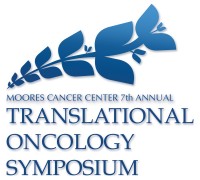- Home
- »
- Meetings
- »
- Industry/Academia Translational Oncology Symposium
- »
- Control of Tumor Progression and Metastasis by Lymphocyte-Produced Cytokines
Control of Tumor Progression and Metastasis by Lymphocyte-Produced Cytokines
Michael Karin, Ph.D., UCSD School of Medicine
| April 21, 2011 | |
| 30 minutes | |
| Michael Karin | |
Dr. Karin made seminal contributions to the discipline of signal transduction describing how extracellular stimuli, including growth factors, cytokines, tumor promoters and UV radiation, regulate gene expression in eukaryotic cells. Starting with cloning of the human metallothionein IIA gene and analysis of its promoter, Karin and coworkers were the first to identify cis elements that mediate induction of cellular genes by stress signals, glucocorticoids and tumor promoters. This resulted in identification of several transcription factors, including AP-1, that recognize these cis elements. AP-1 was subsequently shown by Karin and coworkers to be composed of Jun and Fos proteins. This provided one of the first demonstrations that nuclear protooncoproteins function as transcription factors. Analysis of the mechanisms by which growth factors and UV radiation induce AP-1 activity led to identification of a major signaling pathway (the JNK MAP kinase cascade), elucidation of the mechanisms by which protein phosphorylation controls transcription factor activity and an explanation for the ability of membrane associated oncoproteins, such as Ras, to modulate gene transcription. Karin and coworkers have also described how proinflammatory stimuli regulate the activity of transcription factor NF-kB and identified the IkB kinase (IKK) complex, which they have shown to be a major regulator of innate immunity and inflammation. Genetic analysis of IKK function resulted in identification of a novel signaling pathway that controls development of the mammalian epidermis. Karin and coworkers were also the first to biochemically identify a cell type specific transcription factor (GHF-1/Pit1), demonstrate its kinship to homeodomain proteins and provide important insights to the mechanism of tissue specific gene expression.


